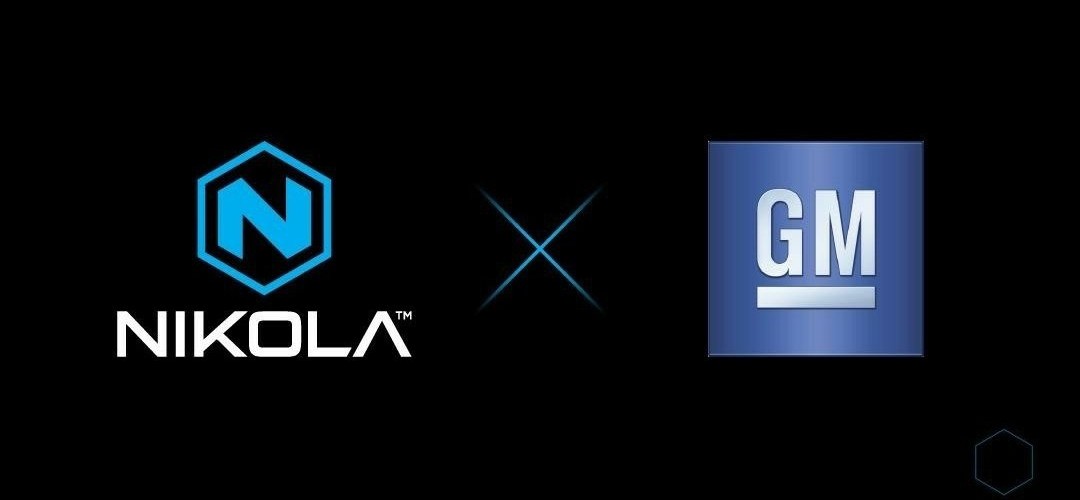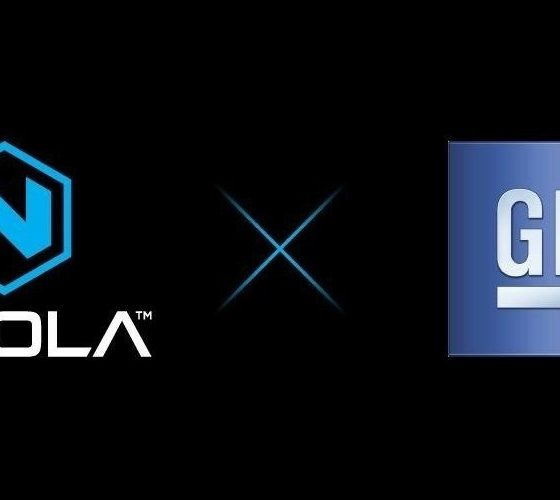

News
Nikola hands off fuel cell and battery systems to GM in joint venture
Nikola Motor has reached an agreement with General Motors that will see the legacy automaker produce its first pickup truck, the Badger. GM will hold the responsibility of engineering the battery and fuel cell electric vehicle variants of Nikola’s introductory passenger vehicle, according to sources.
In exchange for the “in-kind services,” GM will receive a $2 billion equity stake in Nikola. The Detroit-based GM will be required to validate, homologate, and build the Badger for Nikola, which will save the startup over $4 billion in battery and powertrain costs over ten years. An additional billion dollars will also be saved in engineering and validation costs.
GM expects to receive more than $4 billion of benefits “between the equity of the shares, contract manufacturing of the badger, supply contracts for batteries and fuel cells, and EV credits retained over the life of the contract,” according to @andyjayhawk on Twitter.
Breaking: GM is teaming up with Nikola to help the hydrogen/EV startup build its first pickup truck, the Badger pic.twitter.com/jIXW3IOWRr
— Andrew J. Hawkins 🚇🚌🚲🛴 (@andyjayhawk) September 8, 2020
GM will also be the exclusive supplier of fuel cells for Nikola’s class 7 and class 8 trucks outside of the European market. These two categorizations are for “heavy trucks” that will weigh 26,001 pounds and up.
General Motors confirmed the announcement this morning on Twitter and stated that the Nikola Badger would use GM’s Hydrotec fuel-cell technology and Ultium battery systems.
We will also be the exclusive supplier of fuel cells globally for their Class 7/8 semi-trucks, except in Europe. Learn more about today’s announcement: https://t.co/2JvnAlHE35
— General Motors (@GM) September 8, 2020
GM has expanded its exploration into EV and alternative-fuel vehicle development over the past several months. Executive Vice President Doug Parks has stated that the automaker has “multiple teams” working on developing zero-cobalt batteries, solid-state electrolytes, and an ultra-fast charging infrastructure.
But GM taking on Nikola’s projects is a whole different ballgame in comparison to a traditional EV project. Nikola’s vehicles are primarily hydrogen fuel-cell-based, but the Badger pickup will be available in both FCEV and BEV variants.
Nikola has been the subject of heavy criticism in the past from skeptics. CEO Trevor Milton has been vocal about his support for moving the world to more sustainable forms of transportation. Still, the EV community has plenty of criticism for the head of the company who has been outspoken in his support for his company.
Perhaps a partnership with an established automaker could help Nikola begin producing its vehicles in a more efficient timeframe. The Badger isn’t expected to be produced until 2022, and the company is currently working on the construction of a production facility in Coolidge, Arizona.

News
Tesla FSD fleet is nearing 7 billion total miles, including 2.5 billion city miles
As can be seen on Tesla’s official FSD webpage, vehicles equipped with the system have now navigated over 6.99 billion miles.

Tesla’s Full Self-Driving (Supervised) fleet is closing in on almost 7 billion total miles driven, as per data posted by the company on its official FSD webpage.
These figures hint at the massive scale of data fueling Tesla’s rapid FSD improvements, which have been quite notable as of late.
FSD mileage milestones
As can be seen on Tesla’s official FSD webpage, vehicles equipped with the system have now navigated over 6.99 billion miles. Tesla owner and avid FSD tester Whole Mars Catalog also shared a screenshot indicating that from the nearly 7 billion miles traveled by the FSD fleet, more than 2.5 billion miles were driven inside cities.
City miles are particularly valuable for complex urban scenarios like unprotected turns, pedestrian interactions, and traffic lights. This is also the difference-maker for FSD, as only complex solutions, such as Waymo’s self-driving taxis, operate similarly on inner-city streets. And even then, incidents such as the San Francisco blackouts have proven challenging for sensor-rich vehicles like Waymos.
Tesla’s data edge
Tesla has a number of advantages in the autonomous vehicle sector, one of which is the size of its fleet and the number of vehicles training FSD on real-world roads. Tesla’s nearly 7 billion FSD miles then allow the company to roll out updates that make its vehicles behave like they are being driven by experienced drivers, even if they are operating on their own.
So notable are Tesla’s improvements to FSD that NVIDIA Director of Robotics Jim Fan, after experiencing FSD v14, noted that the system is the first AI that passes what he described as a “Physical Turing Test.”
“Despite knowing exactly how robot learning works, I still find it magical watching the steering wheel turn by itself. First it feels surreal, next it becomes routine. Then, like the smartphone, taking it away actively hurts. This is how humanity gets rewired and glued to god-like technologies,” Fan wrote in a post on X.
News
Tesla starts showing how FSD will change lives in Europe
Local officials tested the system on narrow country roads and were impressed by FSD’s smooth, human-like driving, with some calling the service a game-changer for everyday life in areas that are far from urban centers.

Tesla has launched Europe’s first public shuttle service using Full Self-Driving (Supervised) in the rural Eifelkreis Bitburg-Prüm region of Germany, demonstrating how the technology can restore independence and mobility for people who struggle with limited transport options.
Local officials tested the system on narrow country roads and were impressed by FSD’s smooth, human-like driving, with some calling the service a game-changer for everyday life in areas that are far from urban centers.
Officials see real impact on rural residents
Arzfeld Mayor Johannes Kuhl and District Administrator Andreas Kruppert personally tested the Tesla shuttle service. This allowed them to see just how well FSD navigated winding lanes and rural roads confidently. Kruppert said, “Autonomous driving sounds like science fiction to many, but we simply see here that it works totally well in rural regions too.” Kuhl, for his part, also noted that FSD “feels like a very experienced driver.”
The pilot complements the area’s “Citizen Bus” program, which provides on-demand rides for elderly residents who can no longer drive themselves. Tesla Europe shared a video of a demonstration of the service, highlighting how FSD gives people their freedom back, even in places where public transport is not as prevalent.
What the Ministry for Economic Affairs and Transport says
Rhineland-Palatinate’s Minister Daniela Schmitt supported the project, praising the collaboration that made this “first of its kind in Europe” possible. As per the ministry, the rural rollout for the service shows FSD’s potential beyond major cities, and it delivers tangible benefits like grocery runs, doctor visits, and social connections for isolated residents.
“Reliable and flexible mobility is especially vital in rural areas. With the launch of a shuttle service using self-driving vehicles (FSD supervised) by Tesla in the Eifelkreis Bitburg-Prüm, an innovative pilot project is now getting underway that complements local community bus services. It is the first project of its kind in Europe.
“The result is a real gain for rural mobility: greater accessibility, more flexibility and tangible benefits for everyday life. A strong signal for innovation, cooperation and future-oriented mobility beyond urban centers,” the ministry wrote in a LinkedIn post.
News
Tesla China quietly posts Robotaxi-related job listing
Tesla China is currently seeking a Low Voltage Electrical Engineer to work on circuit board design for the company’s autonomous vehicles.

Tesla has posted a new job listing in Shanghai explicitly tied to its Robotaxi program, fueling speculation that the company is preparing to launch its dedicated autonomous ride-hailing service in China.
As noted in the listing, Tesla China is currently seeking a Low Voltage Electrical Engineer to work on circuit board design for the company’s autonomous vehicles.
Robotaxi-specific role
The listing, which was shared on social media platform X by industry watcher @tslaming, suggested that Tesla China is looking to fill the role urgently. The job listing itself specifically mentions that the person hired for the role will be working on the Low Voltage Hardware team, which would design the circuit boards that would serve as the nervous system of the Robotaxi.
Key tasks for the role, as indicated in the job listing, include collaboration with PCB layout, firmware, mechanical, program management, and validation teams, among other responsibilities. The role is based in Shanghai.
China Robotaxi launch
China represents a massive potential market for robotaxis, with its dense urban centers and supportive policies in select cities. Tesla has limited permission to roll out FSD in the country, though despite this, its vehicles have been hailed as among the best in the market when it comes to autonomous features. So far, at least, it appears that China supports Tesla’s FSD and Robotaxi rollout.
This was hinted at in November, when Tesla brought the Cybercab to the 8th China International Import Expo (CIIE) in Shanghai, marking the first time that the autonomous two-seater was brought to the Asia-Pacific region. The vehicle, despite not having a release date in China, received a significant amount of interest among the event’s attendees.








